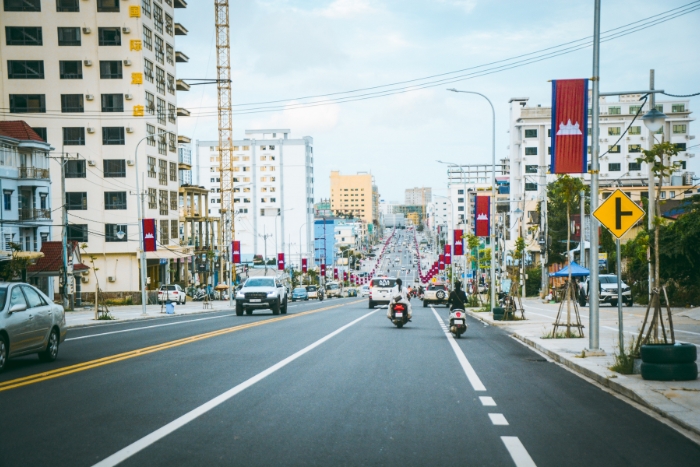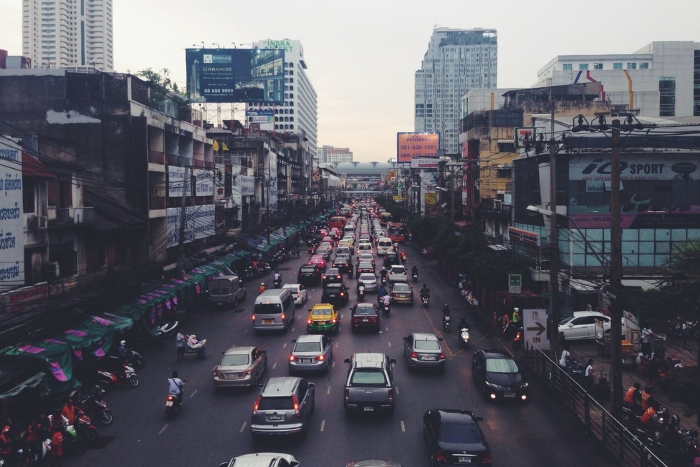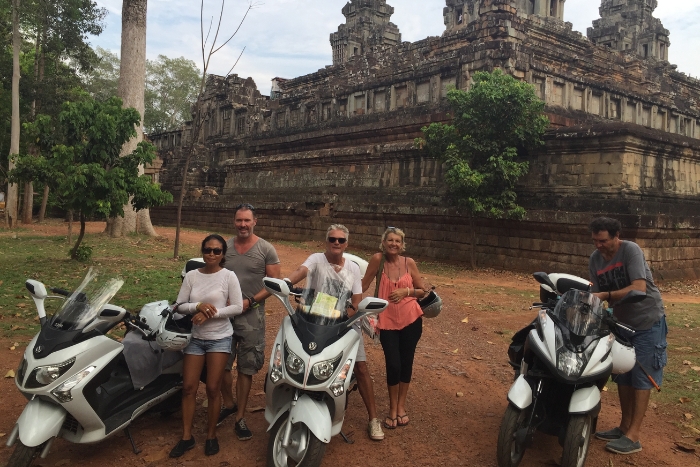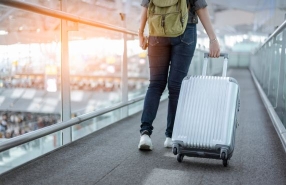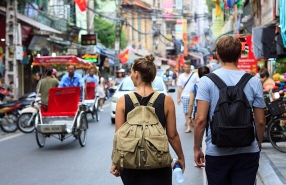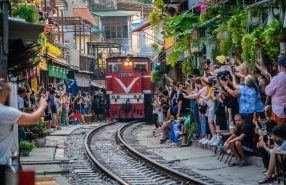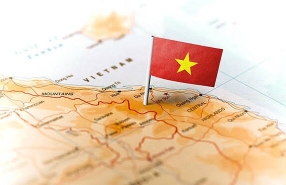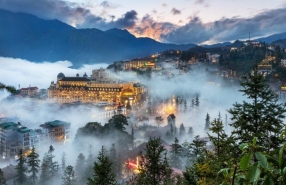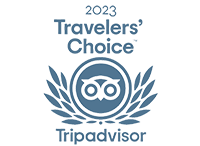
If you ever dreamed of crossing Cambodian landscapes at your own pace, hair in the wind, map on your knees or GPS in your hand, then maybe the idea to drive in Cambodia already passed through your mind. Between tuk-tuks honking, scooters zigzagging, and buffalos walking on the road like it’s their home, driving in Cambodia can feel strange at first. Still, some travelers find a special kind of freedom in it. But before you go on the dusty roads or the ones with palm trees, it’s important to know the basics: do you need an international driving permit Cambodia, what are the main traffic rules for a tourist, and how does transport Cambodia work. This guide is for you, curious about adventure on four wheels, two wheels, or sometimes… no wheels at all.
How To Drive In Cambodia As A Tourist?
I. Driving in Cambodia: rules and road conditions
1. The basic rules to know for good driving in Cambodia
In Cambodia, traffic goes on the right side, same as in France, so this makes it easier for European tourists. But still, the conduction in Cambodia can feel unusual. Road signs can be missing or not very clear, especially outside big cities. Speed limits are usually 30 or 40 km/h in urban areas, 60 to 70 km/h on secondary roads, and up to 90 km/h on main roads, but drivers don’t always respect them. So it is better to drive in Cambodia carefully, especially in rural places where transport Cambodia often includes free animals, tractors, or traditional carts.
Wearing a helmet is strictly required for both drivers and passengers on two-wheel vehicles. Also, the seat belt must be fastened in the front seats, even for short rides. In case of a police check, it’s important to stay polite and show an international driving permit Cambodia, together with your passport and the vehicle papers. Having both a paper copy and a digital copy is strongly recommended.
With some good preparation, driving licence Cambodia rules are not so hard, and driving in Cambodia as a tourist becomes much easier, as long as you stay alert to what is happening on the road.
2. Road conditions and real traffic in Cambodia transport
When you decide to drive in Cambodia, it is useful to know some details about the road conditions and traffic. In big cities like Phnom Penh or Sihanoukville, some national roads are paved and in good shape. Outside the main roads, the streets can be less smooth, sometimes with potholes, limited signs, or parts flooded during the rainy season. As a driving in Cambodia tourist, it is better to plan your trips during the day because street lights are not everywhere and secondary roads need more attention, with animals or road damage possible.
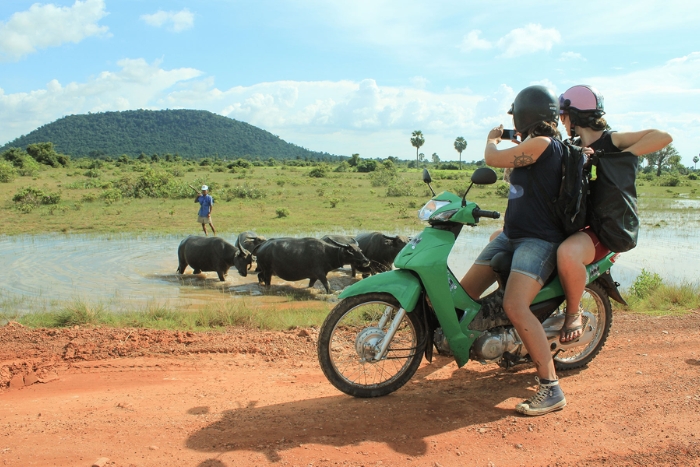
The local driving style follows its own rhythm. Motorbikes, tuk-tuks, or trucks often move in a spontaneous way, which can surprise at first. Some vehicles may not have all lights or mirrors working. For a calmer drive in Cambodia, it is recommended to stay on main roads, keep a slow speed, and watch carefully around you. This is part of the practical tips in this guide “How to drive in Cambodia as a tourist?”, same as the question of the international driving permit Cambodia you should prepare before you go.
II. Can you drive in Cambodia with a foreign licence?
To drive in Cambodia as a tourist, it is important to know if your foreign licence is accepted. Most of the time, an international driving permit Cambodia is needed. This paper, also called an international driving licence, is not a real licence but an official translation of your national licence, given in your home country. It is free for French residents and can be requested on the ANTS website before leaving. It is valid for three years but only if shown with the original French licence.
Without this international driving permit Cambodia, it can be hard to rent a car or a scooter, and you may have problems at a traffic control. Cambodian police often ask for this document, even if some are more flexible. To avoid trouble, always keep with you: passport, valid visa, French licence, international driving permit Cambodia, and maybe the rental contract.
Driving in Cambodia is not very strict in rules, so it is better to be in order. The transport Cambodia options are many, but if you choose driving in Cambodia as a tourist, you need to prepare well, because once you are on the road, it is too late to go back for a paper you forgot.
III. Renting a vehicle in Cambodia: car or scooter?
When you go explore Cambodia and you dream about driving in Cambodia, you first need to think about how to rent a vehicle in Cambodia. You can rent a car or a scooter, depending on your budget and what you like. To rent, there are local agencies, hotels, or even online platforms. They often ask you for an international driving permit Cambodia (IDP) or your national licence, even if some rentals accept a French licence only. A security deposit is usually needed, sometimes they keep a credit card or your passport as a guarantee.
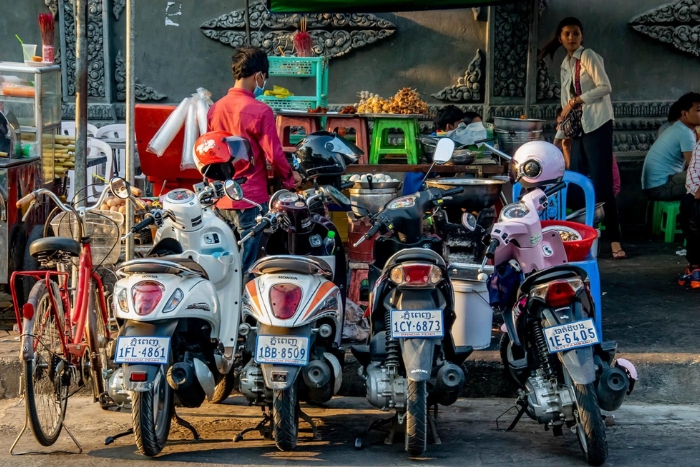
The requirements often include a minimum age (sometimes 21 years old, with extra fees until 25), a valid licence, and insurance. For scooters: most models up to 125cc do not need a local licence, but an
international driving permit Cambodia is strongly recommended to avoid problems during police checks. Your
driving licence Cambodia must also be valid for the whole rental period.
Here are some rental addresses to consider in Cambodia:
DYNA Scooter in Siem Reap (scooter type 110–125cc, passport or cash deposit)
7 Makara St, Krong Siem Reap, Cambodia
from $8 SIEM REAP SCOOTER RENTAL (many options, good condition, clear prices)
17252 Sok San Rd, Krong Siem Reap, Cambodia
Scooter & Cars Rentals in Kep (daily rental for scooter or car, passport deposit)
Krong Kaeb, Cambodia
This information helps you understand how
transport in Cambodia works for a tourist who wants to
drive in Cambodia, and what you really need to plan before getting behind the wheel.
IV. Advantages and disadvantages of driving in Cambodia
Driving in Cambodia gives you a nice kind of freedom, especially for travelers who want to explore places that are not so touristy. When you drive in Cambodia and have your own way of moving around, it is easier to visit faraway villages, small hidden temples, or local markets that are not always in the organized tours. Driving in Cambodia also lets you manage your time without too many limits, which is good if you want to stop often to take pictures or rest a bit. For curious tourists who want to see the country in another way, this option feels like a closer look into daily Cambodian life. With an international driving permit Cambodia and some good preparation, this experience can be both practical and quite nice.
However, driving in Cambodia as a tourist comes with some challenges. Road signs can be missing or only written in Khmer, which makes navigation tricky. The transport in Cambodia, while more developed in big cities, can still feel a bit messy in rural areas. Traffic rules are sometimes not respected, and the unexpected habits of local drivers mean you need to pay attention all the time. It is also good to know that police presence can lead to checks, and without valid documents like a driving licence Cambodia or an international driving permit Cambodia, this can be a problem. Finally, if an accident happens, the process can be long and complicated for foreigners.
V. Practical tips for a tourist driving in Cambodia
- Always having your papers with you is a must for driving in Cambodia. The police can ask for them at any moment. You should keep a copy of your passport, visa, international driving permit Cambodia, and your insurance.
- A good travel and vehicle insurance is also a smart idea. The roads can surprise you, and in case of an accident, it’s better to be safe. Transport in Cambodia is not always easy to predict.
- A phone with GPS helps a lot. The connection is not perfect everywhere, but with a local SIM card, it’s easy to find the roads and gas stations.
- Knowing a few words in Khmer can help with driving in Cambodia. Simple phrases like “turn left” or “careful” are useful.
- Finally, writing down emergency numbers is important. If something happens, calling the police, an ambulance, or the embassy can make a big difference when you choose to drive in Cambodia.
Driving in Cambodia can feel a bit scary at first, especially if you are not used to Southeast Asia traffic. But with a little preparation, including getting your driving licence Cambodia and international driving permit Cambodia, you might find that driving in Cambodia becomes an adventure full of surprises. By choosing this option, you have the freedom to explore places not so easy to reach with normal transport Cambodia, while living the local daily life at your own pace. Of course, being careful is very important, because driving in Cambodia for tourists means adapting to a different rhythm. If you like going off the beaten path, then yes, to drive in Cambodia could be your best choice for this trip.
Can you include driving in a tourist trip in Cambodia?
Yes, some itineraries for driving in Cambodia let you explore the country at your own pace, by car or motorbike. This can be part of a custom trip or an organized tour. For example, during a 10-day holiday, you can mix free driving and guided visits. You can get ideas from our Cambodia 9 days 8 nights itinerary to create your own adventure.
What are the other transport options in Cambodia if I don’t want to drive?
If you don’t want to drive in Cambodia, you can choose other transport Cambodia options like tuk-tuks, buses, or private drivers. You can see all the details in our full guide about how to get around in Cambodia. These choices give you more comfort and less stress for your trip.
Do you need an international driving permit to drive in Cambodia?
Yes, for most travelers, it is recommended to get an international driving permit Cambodia before your trip. This paper, together with your local driving licence, makes things easier if you get checked and helps you follow the law. Driving in Cambodia also means you need to know the traffic rules, change your speed when needed, and stay alert because road conditions can be a bit unpredictable sometimes.

